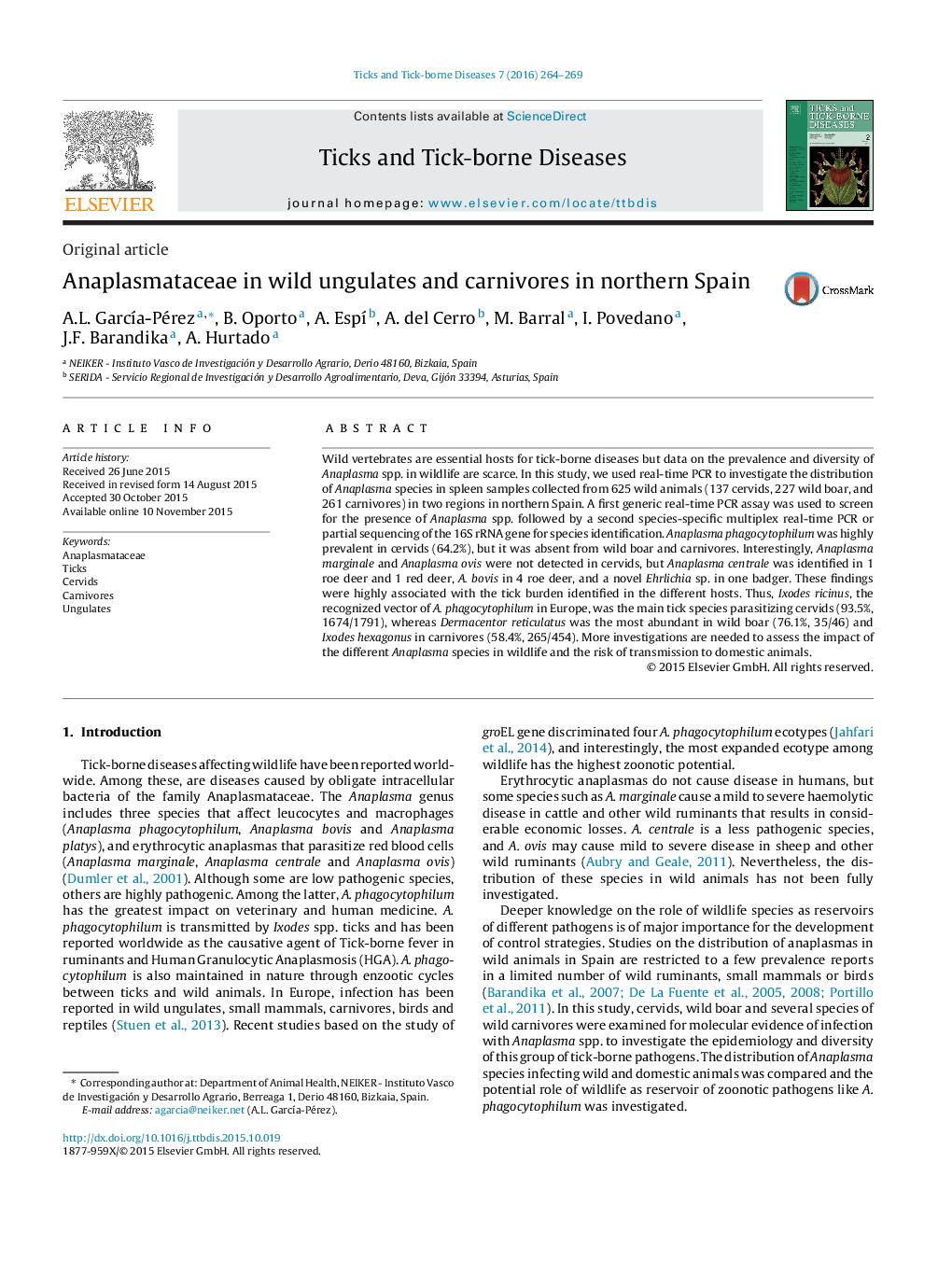| Article ID | Journal | Published Year | Pages | File Type |
|---|---|---|---|---|
| 5807108 | Ticks and Tick-borne Diseases | 2016 | 6 Pages |
Wild vertebrates are essential hosts for tick-borne diseases but data on the prevalence and diversity of Anaplasma spp. in wildlife are scarce. In this study, we used real-time PCR to investigate the distribution of Anaplasma species in spleen samples collected from 625 wild animals (137 cervids, 227 wild boar, and 261 carnivores) in two regions in northern Spain. A first generic real-time PCR assay was used to screen for the presence of Anaplasma spp. followed by a second species-specific multiplex real-time PCR or partial sequencing of the 16S rRNA gene for species identification. Anaplasma phagocytophilum was highly prevalent in cervids (64.2%), but it was absent from wild boar and carnivores. Interestingly, Anaplasma marginale and Anaplasma ovis were not detected in cervids, but Anaplasma centrale was identified in 1 roe deer and 1 red deer, A. bovis in 4 roe deer, and a novel Ehrlichia sp. in one badger. These findings were highly associated with the tick burden identified in the different hosts. Thus, Ixodes ricinus, the recognized vector of A. phagocytophilum in Europe, was the main tick species parasitizing cervids (93.5%, 1674/1791), whereas Dermacentor reticulatus was the most abundant in wild boar (76.1%, 35/46) and Ixodes hexagonus in carnivores (58.4%, 265/454). More investigations are needed to assess the impact of the different Anaplasma species in wildlife and the risk of transmission to domestic animals.
